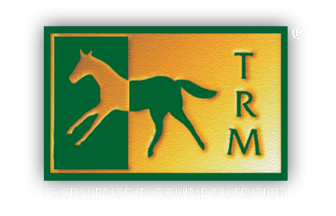The Changing of the Seasons
With the Autumnal Equinox for the Northern hemisphere taking place in late September (22nd of September to be exact this year) we are starting to feel a real change in the weather. It is time to start adjusting diets and factoring in protective measures to help horses cope with changing pasture quality, transition from field to stable and colder temperatures. It is quite similar to ourselves taking a ‘tonic’ for the winter months to ward off colds and flus.
Two areas to consider at this time of year are:
1. Changing diet
Grass quality fluctuates with every season, but the shift in quality from Summer to Autumn is significant. During this time of mild / sunny daytime temperatures and cold nights there is a concentration of stored sugars in the grass, which may increase the risk of digestive upset or laminitis in some horses. Horses suffering from Equine Metabolic Syndrome (EMS), are at most risk as are those that are significantly overweight or those that have trouble managing normal blood sugar levels and are sensitive to sugar content in the diet.

Changing from field to a more restricted, stable based environment is challenging for the horses’ sensitive digestive system, assistance during these changes should be provided in the form of Pre and Probiotics, TRM’s Synbiovit contains the only probiotic licensed for use in equines – live yeast Saccharomyces Cerevisie is in a stable form, this combined with prebiotics, calcium carbonate and B Vitamins aids the hindgut significantly in being able to cope with the challenges of seasonal changes.

If care is not taken in advance during these dietary changes’ horses may develop gastric ulcers which are painful and debilitating. Signs of gastric ulcers in horses include, weight loss, increased irritability, intermitted colic. Again, dietary supplementation to protect the gut, in a natural way, and allow it to heal will prove beneficial. GNF supplies a unique formulation of probiotics, amino acids, seaweed extract and specific minerals necessary to aid in the recovery and maintenance of a healthy digestive tract.
Switching from fresh grass to hay or getting a new supply of hay represents as big a change to the horse as a change in concentrate feeds. These significant dietary adjustments should ideally be made gradually to decrease the risk of digestive upset. It is imperative to horses who may suffer from gastric ulceration that an over reliance on grain is not used to maintain body condition and energy levels. Horses suffering from EGUS should be fed concentrates that are higher in fibre and oil.

2. Sunlight and Vitamin D
Vitamin D is actually a hormone, and adequate sunlight results in the production of sufficient vitamin D from 7-dehydrocholesterol in the skin. There is concern that horses in the autumn /winter season may become deficient in vitamin D, due to fact that they are stabled for a significant proportion of the day.

Sufficient vitamin D must be present for calcium and phosphorus to be absorbed; a vitamin D deficiency considerably reduces absorption of both minerals. Indeed, vitamin D deficiency might be a factor that could influence the risk of skeletal injury and predispose animals to inflammatory airway disease and other ailments that commonly affect horses in training (C. M. Riggs., 2019)
Vitamin D exists in several forms, the majority of which is present as ergocalciferol (D2) or cholecaciferol (D3). The former is produced by fungi on plant material when they are exposed to sunlight and is consumed by the horse within forage feeds. Conversely, cholecaciferol can be synthesized endogenously from cholesterol during a chemical reaction in the skin that depends on sunlight.

Foods naturally rich in vitamin D3 include Marine Algae Oils (Omega 3). Sun-dried forages have high levels of vitamin D2. Hays that have been dried artificially with little exposure to sunlight will not contain much vitamin D. Lower-quality hay must be supplemented to maintain horses’ good condition, health and performance.
To ensure adequate vitamin D is received in the diet, supplementation with Speedxcell – TRMs multi-vitamin and mineral complex, providing a dose of 6,500iu per day of Vitamin D3 is recommended. Some literature comments on fat-soluble vitamin toxicity. The upper safe limit for horses is 22,000iu per day of Vitamin D so the amount supplemented in Speedxcell is well within the limits and may prove to be essential in today’s husbandry practices which predispose the horse to suboptimal intakes of vitamin D. Restricting the amount of turnout for horses (< less 2 hours/ day) prevents their bodies from having time to convert sufficient vitamin D in the skin. In addition, during winter, conversion is less efficient because of the lower intensity of light and is further compounded by the use of rugs covering much of the horse.

As the cold evenings draw in, reach out for a Probiotic, tonic or multi-vitamin supplement for you and your horse to fend off the viruses and bugs that come with the changing of the seasons.
